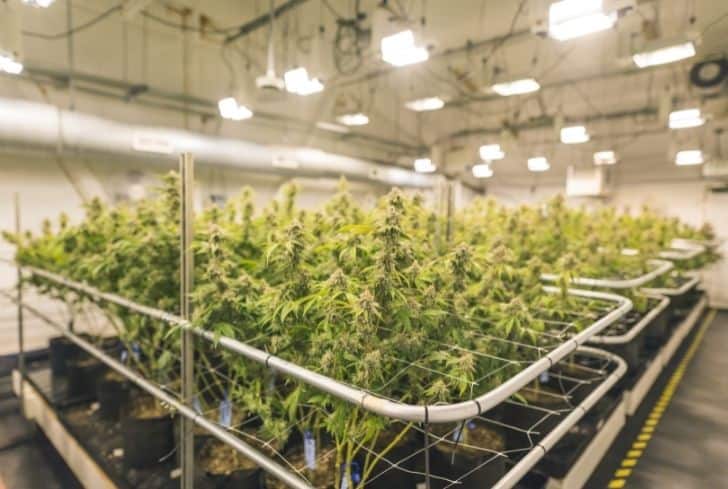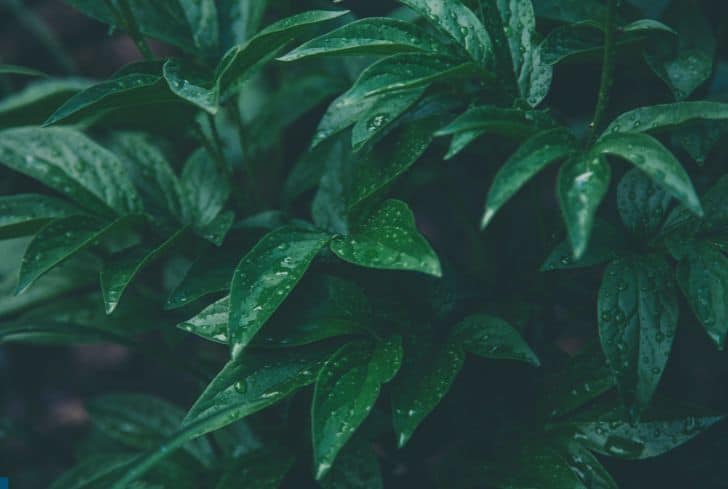Can Plants Photosynthesize With Artificial light?

Nowadays, it’s common to find house plants in nearly every room in the house. They’re used to beautify the spaces in our homes. Plants are photosynthetic organisms. This means that they require light to produce energy for themselves.
The significance of photosynthesis in the maintenance of life on earth can’t be overstated. There would be little food or other organic materials on earth if photosynthesis stopped. Most life would perish, and the earth’s atmosphere would eventually be nearly empty of gaseous oxygen. The thought of this is scary.
Plants and other photosynthetic organisms convert light energy from sunlight into chemical energy. Light energy converts water, carbon dioxide, and minerals into oxygen and energy-rich organic molecules. So what happens when your plants don’t get enough sunlight? Is there an alternative to sunlight for photosynthesis to occur?
Light is the critical factor here. Artificial light is an alternative to sunlight for plant photosynthesis.
Can Photosynthesis Occur in Artificial Light?
Plants have pigments that enable them to undergo photosynthesis. These pigments are chlorophyll, xanthophyll, and carotenoids. They’re responsible for absorbing light during photosynthesis, and they also give leaves their characteristic colors. Chlorophyll is the primary pigment responsible for photosynthesis.
The importance of light in plant light can’t be overemphasized. The light source isn’t an essential factor, but natural light is ideal. However, photosynthesis can occur in the presence of artificial light. If your houseplants aren’t getting enough natural light where they are placed, you can always use artificial lights.
If you place a plant in a room with a bit of natural light source, you’ll notice that the plants’ leaves become pale, unsaturated, and smaller in size than a plant placed in a room with open sunlight. The plant stems and internode also grow to reach the available light source.
Plants photosynthesize at a wavelength of 400 to 700 nanometers. This range is known as photosynthetically active radiation, and it encompasses the red, blue, and green wavebands. If the plant is exposed to the correct wavelength of light, photosynthesis can occur in artificial light.
Artificial lights that have more red and blue wavelengths are ideal for photosynthesis. Sunlight has the perfect wavelength balance for plant growth and blooming.
However, artificial light can also be used to assist your plants. In reality, with enough artificial light, low-light foliage plants such as peace lily and Pothos may thrive in dark spaces.
Most greenhouses these days utilize artificial light to optimize production. Greenhouses provide the best conditions for growing plants. They’re built in such a way that they let in enough light, yet they are enclosed enough to prevent convective heat loss. However, natural light isn’t always available in adequate amounts.
Using artificial lights, greenhouse growers can boost their production and lengthen the growing season.
Do Plants Grow Better Under Artificial Light or Natural Light?
Plants can grow in both natural and artificial light, but in artificial light as effective as natural sunlight? As a gardener or plant owner, getting enough natural light for your plants to thrive can be tricky.
Generally, natural light is the best option for your plants’ optimum growth, as artificial lights can’t duplicate the exact wavelengths of light that are beneficial for plants.
On the other hand, Artificial lights can be an excellent way to supplement natural light, especially in rainy seasons, when there isn’t enough of it. However, the more natural light you can give your plant, the better.
Whether or not plants grow properly isn’t dependent on the light source alone. Apart from light, plants need water and soil to survive. Together with the amount of light the plant receives, these factors would determine how well the plant grows. However, plants don’t benefit from artificial light as they do from natural light.
Many artificial light sources emit more green and yellow wavelengths than red wavelengths. Others produce light with red or blue wavelengths, but not both. This provides plants with very little energy. There’s currently no artificial light powerful enough to offer plants the same energy as the sun.
We must also consider the heat generated by the sun compared to that by artificial light sources. Natural light from the sun emits just the right amount of heat for plants’ optimum growth. However, artificial light sources may provide the right light but overheat the plants. As a result, they’re less effective for plant growth.
How Do Plants Grow With Artificial Light?
Plants are organisms that can synthesize their food from inorganic substances. All they need is a source of heat or light as a source of energy. They are known as autotrophs.
Have you ever considered growing plants in a controlled environment? If you didn’t know, it’s feasible to grow plants indoors with artificial light to maturity. This leaves the question of whether or not this method is worthwhile to you.
Plants grow under artificial light the same way they grow under natural light in reaction to the wavelengths emitted. Light has three dimensions. These dimensions are light duration and lighting spectrum. The relationships between light and temperature measurements profoundly affect plant growth under artificial light.
You must remember that the type of artificial lighting system you use also affects temperature. This, in turn, affects humidity levels around your plants. Understand this, the heat from your artificial light source could burn your plant if you’re not careful.
To grow, plants need a light with blue wavelengths for foliage growth. This means that artificial lights that blue wavelength would encourage plant foliage growth. Also, plants need lights with a red wavelength for fruiting and flowering. This means that artificial lights that emit red wavelengths would suit flowering and fruiting plants.
Which Artificial Light is Best For Plants?
We’ve established that artificial lights can grow plants effectively. Now, let’s look into the best artificial lights for plant growth. To determine which artificial lights are best for plants’ development, we must consider the wavelength of light they emit and the amount of heat they produce.
One good option is fluorescent lights – they are a popularly used alternative light source for plant growth. They come in two forms, the conventional long tubes or the more sophisticated compact light bulbs. Fluorescent lights last a very long time without generating too much heat.
They can be placed close to plants to release the full effect of the light. Even though fluorescent lights produce a lot of the blue light that plants require for foliage growth, they lack the equally crucial red colors. To counteract this, you may choose to get the whitest fluorescent bulb available or supplement the use of the white bulb with an incandescent bulb.
An incandescent bulb on its own is another great option for artificial light. The light they emit is directly opposite to what fluorescent bulbs emit. They release warm lights that are rich in red wavelength. While red lights promote flowering in plants, blue lights are still crucial.
Incandescent bulbs produce a lot of heat, and as a result, they must always be kept at least one foot away from your plants.
Halogen and horticulture lights emit a full spectrum of light. This is good for plants. However, the downside to using them is that they generate a very high amount of heat, and they’re expensive. As a result of this, they might not be the best choice for an alternative light source.
Symptoms of Insufficient Light For Plants
When plants lack light, they show physical symptoms. As a result, it’s effortless to tell when your house plant isn’t getting enough light. It’s best to determine the quality and quantity of natural light that’s able to enter your space before you consider getting a plant or seeds.
After doing this, you can then select the plants with light requirements compatible with your indoor light setting.
While a plant may tolerate low light, it may need more light to grow thick foliage and flowers. If your plants have any of the following symptoms, they may need more sunlight.
Provided your plant has leggy growth, that is, it has sparse leaves growing apart. It’s a sign that it needs a better source of light. When house plants are placed where they aren’t getting enough sunlight, they tend to grow long stems and branches, like they’re reaching for the light. This results in an unhealthy-looking plant.
Similarly, you may notice your plants growing towards windows or areas with a better light source. As a result, the sides blocked from the light source may become bear with time, while the side leaning towards the light source becomes lusher.
Also, is your plant thriving indoors or just surviving? If your plant hasn’t produced any new growth in months, it’s conceivable that it’s the latter and in dire need of sunlight.
Conclusion
Researchers are learning more about artificial light sources and how they can improve them to be more beneficial to plants’ growth. We hope that more profound knowledge of how they work will improve artificial light technologies.
There are affordable and modest growth chambers that can function just as well as the sun for those of us who live in apartments that don’t get a lot of natural light. Just make sure the light isn’t on all the time, as too much light can harm your plants.






